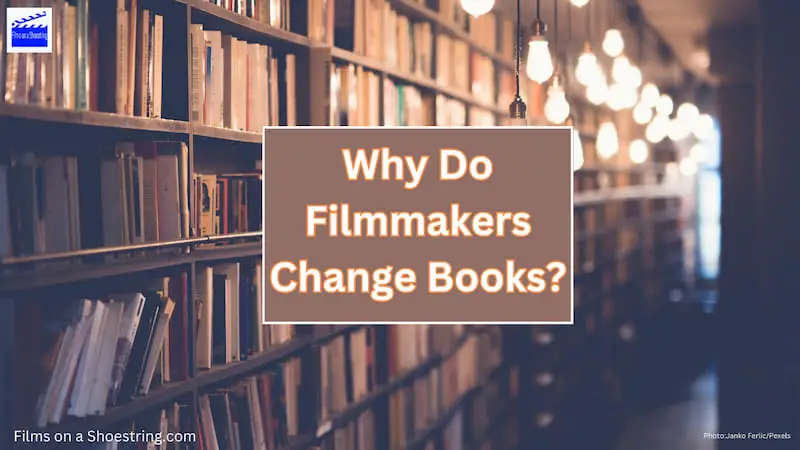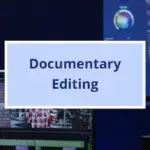Film adaptations of popular books oftens involve significant changes to the plot and major character, which either puzzle or or infuriate the book fans watchig on the resulting film.
But why is a book adaptation necessary to bring a well written story to the big screen?
Have you ever read a book and eagerly awaited the movie to come out only to be disappointed by the changes made? It’s a common occurrence in the film industry, and many wonder why filmmakers feel the need to alter the original material. Is it a matter of pacing? Is it to create more drama and excitement? Or is it merely a matter of artistic interpretation?
Let’s explore the reasons behind why filmmakers change books and whether or not these changes affect the success of the adaptation. So grab your popcorn and settle in, because we’re about to dive into the world of book-to-movie adaptations.
Quick Overview
Filmmakers change books when adapting them into movies for various reasons.
Firstly, movies have a shorter running time compared to books, so changes must be made to fit the story into a limited timeframe.
Secondly, certain aspects of books, such as inner monologues or jumping through time, cannot be translated to film.
Additionally, changes are made to enhance the visual storytelling approach and to put the director’s creative spin on the story.
The casting of actors in specific roles can also change the interpretation of characters. Differences can then arise between the book and the movie versions, such as differences in the character development arc, and essential scenes being omitted.
Shorter Running Time
Movies have a shorter running time compared to books.
While a book can be hundreds or even thousands of pages long, a movie is typically only around two hours.
This means that filmmakers have to condense the plot and characters, often leaving out details and subplots from the book.
They have to focus on the main storyline and key scenes to keep the movie engaging and interesting for the audience.
This can lead to changes in characters and plot points to fit everything into the limited time frame.
Streamlining Storylines
Movies often have to make changes from the original book in order to streamline complex storylines.
This is because a book can be much more detailed and have a wider range of characters and plot lines.
A movie has a limited time to tell a story, and so filmmakers often have to condense and simplify the plot.
This can help to make it easier for audiences to follow the story and understand the main themes.
Sometimes, changes have to be made in order to fit the story into the visual medium of film.
But there’s also an issue of cost. Movies take years to develop and film. The more complications in the script, the longer everything will take and the more expensive the total cost.
Certain aspects of books can’t be translated to film
One of the main reasons why filmmakers change books when making movies is that certain aspects of books cannot be translated to film.
This could include complex inner monologues, symbolism, or even the way a story unfolds over time.
For example, a book may rely heavily on a character’s thoughts and feelings, which are difficult to convey through visuals alone.
Additionally, certain themes or messages may be more subtle in the written word, and harder to translate to the screen without losing the essence of the story.
As a result, filmmakers often have to make significant changes to the original text in order to create a coherent and visually compelling movie.
Outdated Attitudes
Movies are often adapted from popular books due to their widespread popularity and success. While movies try to stay true to the original content, changes are sometimes made to adapt to modern attitudes and perspectives.
In particular, outdated attitudes towards women, race, sexuality, and other equality issues may lead to changes in the movie adaptation.
For instance, in many older books, women are portrayed as inferior or helpless, and people of colour as servants or manual labourers. There are certain words, jokes, or themes in the book, which may be perceived as racist or sexist today.
Movie adaptations try to eliminate these outdated viewpoints and replace them with more modern and positive attitudes, reflecting the audiences who watch them. Offensive attitudes, which were still very common in the 1980s and 1990s, today keep audiences away.
So while movie adaptations aim to stay true to the original content and storyline, changes may be necessary to update the attitudes and perspectives towards various equality issues.
Enhance the visual storytelling
Filmmakers change books when making movies to enhance the visual storytelling approach.
Changes are made to improve the cinematic experience for the audience. Directors may add in new scenes, alter existing ones, or change the order of events to create a more compelling story on screen.
Visual effects, sound design, and music also play a role in enhancing the overall experience.
Ultimately, filmmakers aim to bring the story to life in a way that captivates and entertains the audience, helping to boost the cinema sales and distribution income.
A creative spin on the story
The Director likes to put their own creative spin on the story when adapting a book into a movie, in conjunction with the screenwriter they are working with. This allows for a unique interpretation of the original material and can enhance the overall viewing experience.
Some directors may change certain plot points or character attributes to better fit their vision. Quentin Tarantino, for example, is known for taking historical events and adding his own unique twist to create an alternate timeline expressing varied storylines.
However, it’s usually important for directors to stay true to the overall facts that have been documented and not change the historical record to fit a current narrative or set of beliefs.
Other constraints, such as studio guidelines and direct involvement of the author, often acting as executive producer, will also have a bearing.
Cater to audience expectations
In the movie industry, it is common for filmmakers to change the endings of their films to cater to audience expectations.
This practice is often driven by the desire to increase box office sales and ensure that the movie is well-received by the public.
Research has shown that audiences tend to prefer movies with happy or satisfying endings, as these are seen as more uplifting and enjoyable.
As such, filmmakers may decide to modify the original ending of their movie to ensure that it is more palatable for viewers.
For example, in the 1989 movie “Dead Poets Society,” the original ending featured the main character being expelled from school and his subsequent suicide.
However, after test screenings revealed that audiences found this ending too depressing, the filmmakers opted for a more uplifting conclusion in which the students stand on their desks and pay tribute to their teacher, signalling that they are breaking free of their confinement and repression.
Similarly, the ending of the 1986 movie “Pretty in Pink” was changed after negative audience reactions to test screenings. Originally, the protagonist Andie ended up with her best friend Duckie.
However, this ending was perceived as unrealistic and unsatisfying, so the filmmakers changed it to have Andie end up with her love interest Blane instead.
Changing movie endings to cater to audience expectations is a common practice in the movie industry.
Filmmakers may make these changes in order to increase box office sales and ensure that the movie is well-received by viewers.
Research has shown that audiences tend to prefer happy or satisfying endings, which can influence these decisions.
The lead actors
The actors cast in specific roles can greatly impact the interpretation of characters in movies.
The choice of lead actor is key to the financing of the project. The bigger the name, the better the chance of a larger paying audience at the cinema.
Their portrayal of the character’s physical attributes, mannerisms, and dialogue can either enhance or detract from the character’s development and impact on the story.
The casting process must consider not only the actor’s talent but also their ability to bring the desired characteristics to the role.
Inaccurate casting can result in controversy and criticism. The controversial practice of whitewashing non-white roles in Hollywood movies seems to be finally on its way out, but lead actors played by thin and beautiful people will continue despite anything an author writes in their book about appearance of the main characters!
More about Filmmaking
- Low Budget Filmmaking: More for Less
- Lighting Department Film Roles
- Shooting An Interview
- Documentary Editing
- What is Sound Design in Film?
- Color Grading for Documentary Series or Film
- Film Set Etiquette: Professional Behaviour on Set
- Observational Documentaries And Their Impact
- Essential Skills for Film Industry Professionals
- How to Create a Storyboard in 6 Simple Steps
- What Makes a Film Successful
- Breaking into the Film Industry without Experience
- Sports Documentary Filmmaking
- How to Create a Storyboard Using Sticky Notes
- Remove Background Noise From Video
- Why Do Filmmakers Use Clapper Boards?
- Indie Films
- Indie Filmmaking
- What is Post Production in Film
- Ken Burns Effect: Creating Eye-Catching Sequences





















